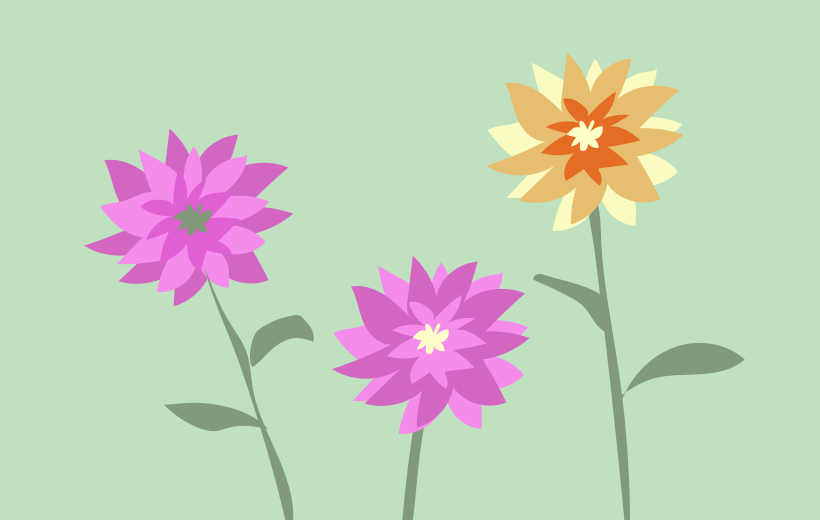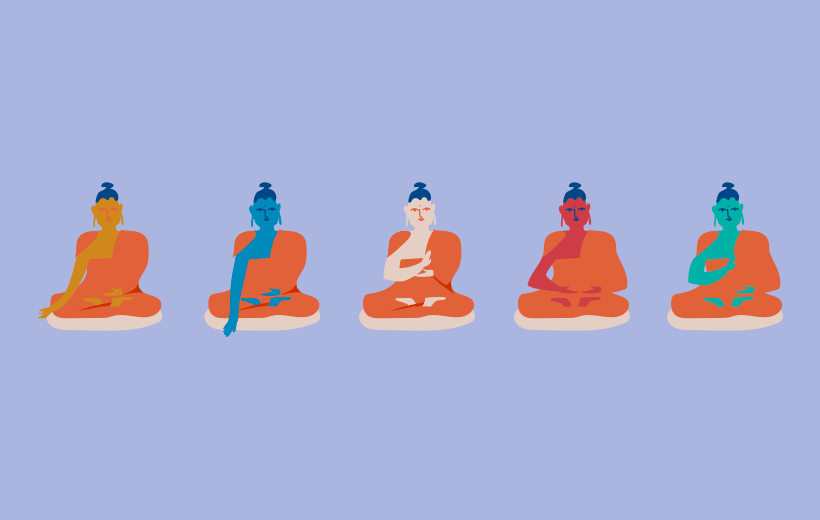EARTH: OUR SOURCE OF LIFE AND WISDOM
By Yongey Mingyur Rinpoche • 2 min read

Our home is Earth. All the food comes from the earth. All the elements. Without these elements, we cannot survive.
EARTH AS OUR MOTHER
Earth is like a mother for all of us. But nowadays, we face something difficult—climate change. We experience a lot of ups and downs with the four elements: sometimes earthquakes rumble beneath us, hurricanes boom with tremendous force, floods wash away communities, and fires consume landscapes. So many of these things happen more frequently now.
WITNESSING CHANGE IN OUR LIFETIME
I was born in the middle of the Himalaya mountains, near Manaslu, one of the highest peaks in the world. When I was young, the glaciers came near my house—only a half-hour walk away. But then I didn’t visit my hometown for almost 15 years. One day when I finally returned, all the glaciers were gone. In their place was a lake! I was really surprised. I could no longer touch the glacier with my hand. What remained looked like dark blue rock around the lake. When I looked up, I could see the glacier had retreated far up the mountain. I tried to walk up there to see it, but it took me two hours.
EVERYTHING IS IMPERMANENT
Of course, everything is impermanent, right? At the beginning, I felt scared and a little bit angry seeing this change, but then I understood that impermanence is natural. Now the most important question is: what can we do? If we add one drop of water to the ocean, as long as the ocean exists, that drop of water exists too. Similarly, whatever we can do from our side to help Mother Earth, to give back to the earth—I think that’s really, really important.
OUR INTERCONNECTED WORLD
Everyone on this planet is interdependent. We all connect to each other. If each person individually makes an effort, the Earth can transform. Whatever we receive from Mother Earth, we should try to give back according to our own capacity and possibilities. This is essential.
DON’T GIVE UP HOPE
Sometimes we lose hope. “I’m only one person—I cannot change the world,” we think, and then we give up. We should not give up! We should understand that impermanence doesn’t always mean something bad. Impermanence means there’s opportunity and potential for positive change.
LEARNING FROM NATURE’S CYCLES
When I was young, my grandfather really loved dahlias—those flowers with roots that look like potatoes. During winter, we had to keep the roots beneath the earth, otherwise they would freeze and die. My grandfather and I would excitedly bury them under the soil in his garden. Then in spring, we would eagerly dig them up and plant them. By mid-summer, the flowers were almost blooming. But then suddenly, an unexpected frost came, and all the flowers died. I had been expecting to see those beautiful blooms the next morning, and I was crying when I discovered they were gone.
THE WISDOM OF IMPERMANENCE
My grandfather asked me, “Is it really important?” He explained that the dying plants would become fertilizer, making the soil better for next year’s flowers. “Nothing is wasted,” he taught me. This became a valuable lesson in my life.
OBSTACLES BECOME OPPORTUNITIES
Now I try to see the value in life’s ups and downs. The ups are inspirational—they make me feel happy. The downs help me learn more and grow more. Sometimes obstacles become opportunities, problems become solutions. In Tibet, there’s a saying: “No mistakes, then no improvement.”
EMBRACING EARTH’S UPS AND DOWNS
The world has ups and downs. The earth has ups and downs. The environment has ups and downs. When things are up, we feel happy—we experience gratitude and appreciation. When things are down, we learn and grow. We transform obstacles into opportunities.
So don’t give up hope! Whatever changes we want to make at our individual level, however we can give back to the environment—we should try our best. We can also transform our challenging emotions about the environment into awareness, love, compassion, and wisdom. I hope we all learn from the earth. And I hope we all, from our own level of ability, give back to the earth.
April 2025
Learn meditation under the skillful guidance of world-renowned teacher Yongey Mingyur Rinpoche at your own pace.


In the midst of her mother’s devastating illness, Masha discovers unexpected gems of compassion, creativity, and presence.

The mind is just like a mountain, just like the sky. No matter what you’re experiencing at present, your mind remains the unchangeable ground, like a mountain. Like the sky, it’s free and pure, and it has the wondrous quality of allowing thoughts, feelings, and perceptions to appear and dissolve like clouds.

What if every emotion you’ve ever tried to get rid of — anger, jealousy, confusion — was actually a doorway to wisdom? The five buddha families offers such an exploration.
If you enjoyed reading our articles, please join our mailing list and we’ll send you our news and latest pieces.